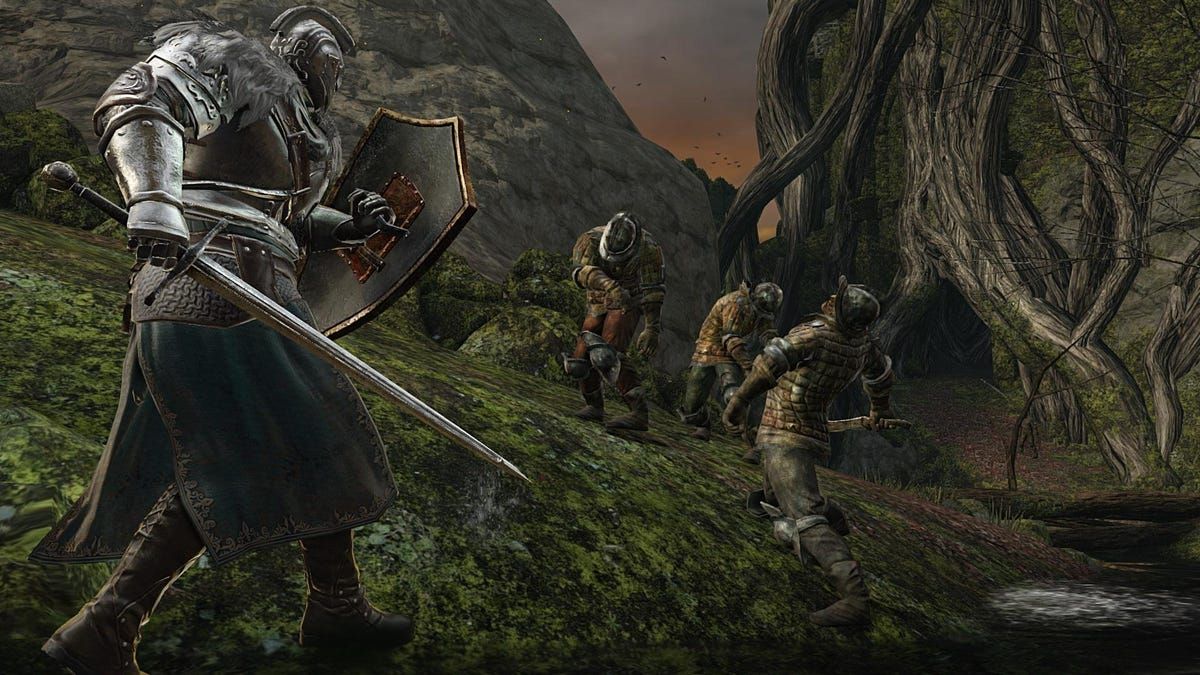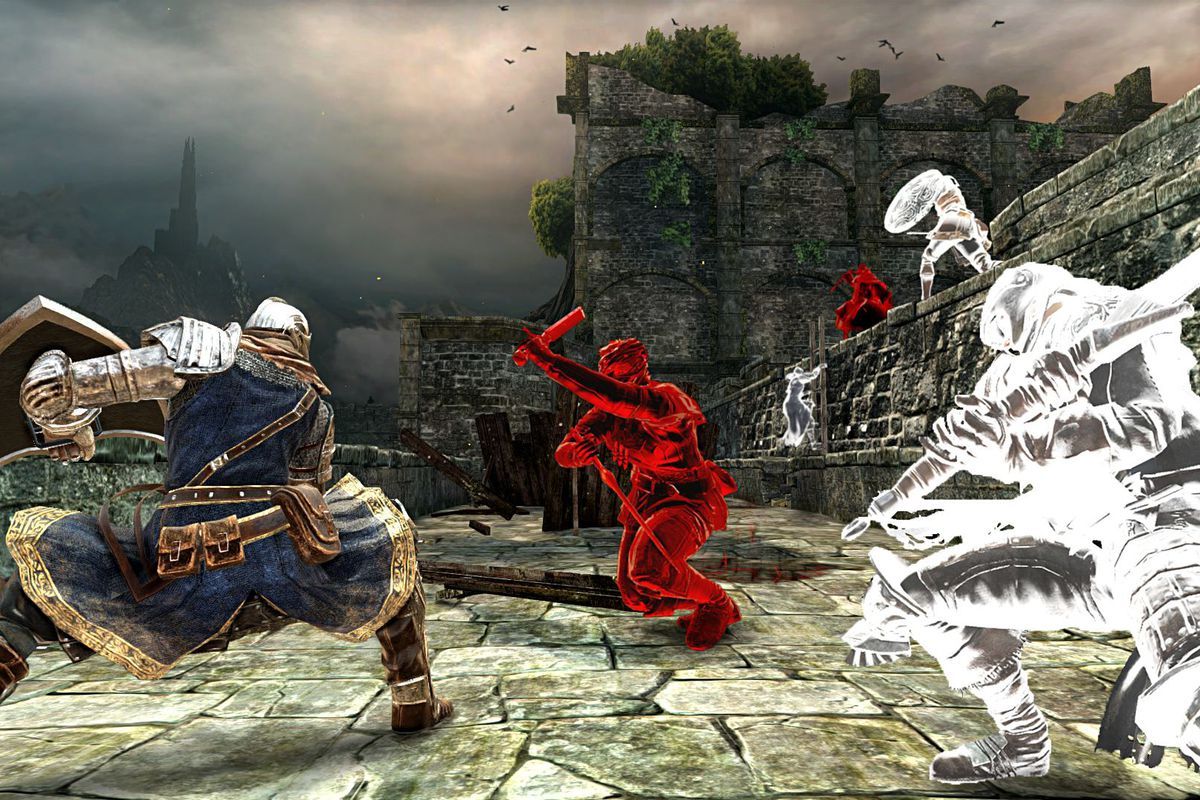Dark Souls 2 Not Continue End Game
Few gaming sequels are as despised as Dark Souls II , a game that is fairly (and unfairly) criticized for its somewhat simplistic level design and lackluster boss fights. However, Dark Souls II has a lot to love storywise, as it expands the mythology of the first Dark Souls while creating lore elements that would be central to its sequel, Dark Souls III . But Dark Souls II is much more than a filler chapter in a brilliant franchise. Revisiting its endings can help us understand how every installment of the Souls franchise echoes the same burning questions about life, death, and faith. However, given the fragmented narrative style of Souls games, the meaning behind each of Dark Souls II endings might not be so obvious. That's why we'll unpack Dark Souls II's convoluted lore and bring its hidden truths to light.
The Inescapable Cycle

Just as in the first Dark Souls, the player plays an undead human in Dark Souls II, the Bearer of the Curse, fated to lose their humanity until there's nothing left behind but a Hollow shell. Also, like in Dark Souls, Dark Souls II tells the player right from the start that there might be a way to break the curse and become human again. That's why the Bearer of the Curse travels to Drangleic, a ruined kingdom shattered into pieces after the vicious attack from Giants coming from beyond the sea.
At first glance, Dark Souls II looks like a repetition of Dark Souls' journey. To be free of their undead condition, the Bearer of the Curse must traverse the fallen kingdom of Drangleic while collecting powerful Souls guarded by mighty foes. Finally, with these powerful souls in their hands, the player can visit Drangleic castle, where Queen Regent Nashandra reveals the key for opening the Throne of Want, the resting place of the First Flame.
Traveling to the past and through armies of Giants, the player recovers the key to the Throne, only to be attacked by Nashandra herself. Once Nashandra is defeated, the player can climb the stairs to the Throne of Want, where an anticlimactic ending reveals that the choice of feeding the Flame or leaving it to fade won't change the world.
Should the player choose to extend the Age of Fire, another kingdom will rise to replace the current one until it inevitably falls into ruins once again. Should the players just abandon the First Flame, the undead curse will wipe their memory, and they will revert to an animalistic Hollow state. Once Hollow, the player won't be able to do anything to stop other Bearers of the Curse from fueling the Flame themselves.
Dark Souls II is cruel because there's no way to win the game. While Dark Souls allows the player to embrace faith or turn their backs to the Gods, Dark Souls II shows that the choice is nothing but an illusion. The cycle of reigniting the First Flame until it fades away again will repeat forever, and you are just too insignificant to change the fate of the world. While most RPGs give the player the power to change the fate of the world, the Souls franchise underlines how inconsequential the personal struggle of the player is. There's just no way to escape the cycle, as the First Flame will always fade and will always be reignited by lost souls looking for a cure.
But what if there was a third choice, beyond the Age of Fire, but also beyond the reach of the undead curse? That's the question the DLCs of Dark Souls II try to answer by adding a second ending that traces a path towards a better future.
The First Sin Revealed

With the addition of three DLCs, all included in the Scholar of the First Sin release, Dark Souls II gives a new meaning for Dark Souls' lore. For starters, Aldia, the elder brother of Drangleic's ruler King Vendrick, has more voice in the DLCs, revealing secrets hidden since the beginning of History. Instead of meddling with the kingdom's affairs, Aldia secluded himself in his Keep to conduct bizarre experiments and uncover the truth behind the undead curse. As Aldia reveals, the curse is not a natural phenomenon caused by the fading of the First Flame, as the old Gods of Lordran wanted the undead to believe. Instead, the curse is the result of the First Sin, in which Gwyn tried to change the world's natural order.
In Dark Souls, we learn Gwyn sacrificed himself to the First Flame to extend the Age of Fire and prevents humankind from ruling in the Age of Dark. Gwyn's fears, however, condemned humanity forever, as the Lord of Lightning is also responsible for the undead curse that transforms humans into Hollows. The First Flame needs fuel to keep burning, and by creating a curse, Gwyn gave enough desperate souls the motivation to cast themselves in the fire. Thus, the ruins of the Souls universe are caused by Gwyn, whose First Sin tainted the existence of all humanity.
So, what can a simple human do against the will of a dead God? Gwyn cursed humanity and created an inescapable cycle fueled by pain and self-sacrifice. The solution, however, might be to stop fighting the curse, embracing it instead. Dark Souls II DLCs has the player exploring three ruined kingdoms, searching for the mystic crowns of fallen rulers. With the crowns in their possessions, players can be blessed by the spirit of King Vendrick, who, undead and fueled by the power of fellow rulers, finds a half-cure for the undead curse.
After being blessed, the player can no longer be cursed or become hollow as long as they wear one of the mystic crowns; they are still undead but capable of keeping their mental faculties intact. Gwyn's First Sin cannot be undone, but the player finds the key to keeping sane even while still undead by embracing the curse and changing its nature. And a being that's incapable of dying, but never loses its mind, is the most powerful being in the world. By trying to prevent humans from ruling, Gwyn might have given humanity its most powerful weapon.
Vendrick's blessing unlocks a secret boss in Dark Souls II and a secret ending in which the player might choose to leave the Throne of Want behind. This ending is not the same as Dark Souls' one, though, as by finding a cure to Hollowness, the player ensures that their legacy will never perish. Other Bearers of the Curse might reignite the First Flame, but now an Undead King is lurking in the dark, waiting for the perfect moment to break the cycle and lead humanity to its rightful place as rulers of the world.
It would take a third game for humanity to fully embrace its destiny. Nevertheless, Dark Souls II is crucial in understanding the Souls franchise lore, flawed as the game might be. Dark Souls II represents the turning point of the franchise, as it opens the possibility of existence far off the Gods' will. Humanity doesn't have to keep praising the old Gods only for being forgotten by the world. Instead, humanity can embrace the reality of their curse, and in doing so, build an empire that'll stand the test of time. That's the most significant contribution of Dark Souls II to the franchise's lore: the perspective of a future without the constraints of a cycle of life and death created by decaying gods.
Source: https://collider.com/dark-souls-2-endings-explained/
0 Response to "Dark Souls 2 Not Continue End Game"
Post a Comment